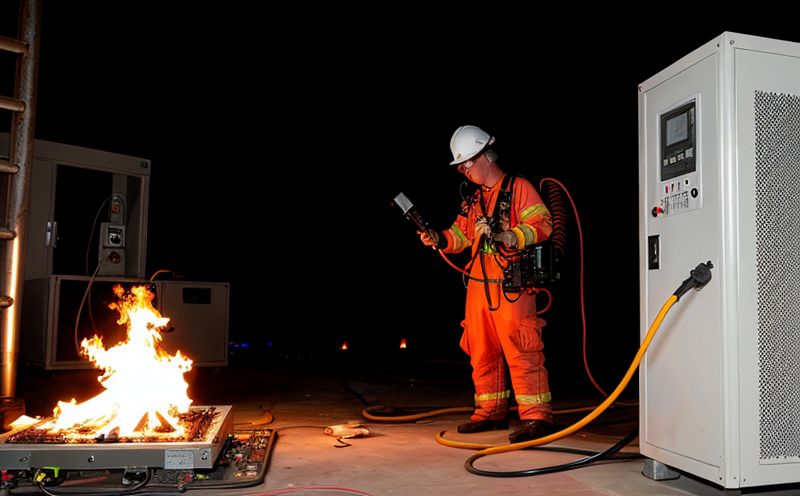IEC 60695-2-10 Glow-Wire Ignition Temperature Test
The IEC 60695-2-10 standard specifies the methods for determining the glow-wire ignition temperature of materials and assemblies. This test is critical in ensuring that electrical and electronic equipment can withstand high temperatures without igniting flammable materials or causing a fire hazard.
During this procedure, a specimen is subjected to controlled heating using an electrically heated tungsten wire (glow wire). The glow-wire temperature is gradually increased until the specimen ignites. The ignition temperature at which this occurs is recorded as the critical value for assessing the material's resistance to fire.
The test is particularly relevant in sectors such as electronics, automotive, and aerospace where electrical components are exposed to various environmental conditions that could potentially lead to fires. By conducting this test, manufacturers can ensure their products meet regulatory requirements and enhance overall safety standards.
Compliance with IEC 60695-2-10 is essential for companies operating in regions like North America and Europe, where stringent fire safety regulations are enforced. For instance, the Underwriters Laboratories (UL) and National Fire Protection Association (NFPA) often reference this standard.
The test apparatus used includes a glow wire heater, a temperature controller, and a furnace or oven to maintain specimen temperature during the test. The specimen is typically a small piece of material from the component under test. Preparing the specimen involves cutting it to size, ensuring flat surfaces for accurate heat distribution.
The test procedure can vary slightly depending on whether you are testing raw materials, assemblies, or complete products. However, all tests follow the same basic principle: gradual heating until ignition occurs. The outcome provides valuable data on how well a material will perform in fire safety conditions.
Understanding the nuances of this test is crucial for quality managers and compliance officers who are responsible for ensuring that their organizations meet global standards. R&D engineers, too, must be familiar with these tests to innovate safer products. Procurement teams also benefit from knowing about such tests as they source materials and components that adhere to these standards.
| Applied Standards | Description |
|---|---|
| IEC 60695-2-10 | Determines the glow-wire ignition temperature of materials and assemblies. |
Applied Standards
The IEC 60695-2-10 Glow-Wire Ignition Temperature Test is widely applied in several standards that address fire safety and electrical equipment. Some of these include:
- IEC 60335-2-8
- UL 94
- NFPA 79
- CISPR 11
Benefits
The IEC 60695-2-10 Glow-Wire Ignition Temperature Test offers numerous benefits that enhance the safety and reliability of electrical and electronic equipment:
- Ensures compliance with international fire safety regulations.
- Reduces the risk of product recalls due to fire hazards.
- Promotes the development of safer products in high-risk environments.
- Supports continuous improvement in material selection and design.
- Aids in meeting customer expectations for quality and safety.
- Facilitates easier entry into international markets with standardized testing requirements.
Customer Impact and Satisfaction
By implementing the IEC 60695-2-10 Glow-Wire Ignition Temperature Test, customers experience several positive impacts:
- Enhanced product safety and reliability.
- Potential reduction in insurance premiums due to lower fire risk.
- Improved brand reputation through adherence to stringent international standards.
- Increased consumer trust and satisfaction with the products they purchase.





